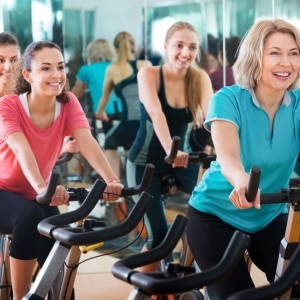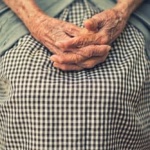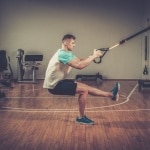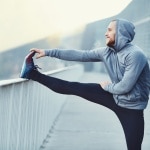
August 2021
Physical Activity & Sleep vs Sitting Too Much
We all have the same 24 hours in a day, and how you spend many of those waking hours impacts your health and wellbeing. The now-entrenched sedentary sciences obviously promote substituting sedentary time with voluntary physical activity. Many studies show that moderate-to-vigorous physical activity (MVPA) correlates very well with one’s risk for cardiovascular disease. But are there health benefits one can get by replacing 30 mins/day of sedentary time with MVPA compared to light physical activity (LPA) or sleep?
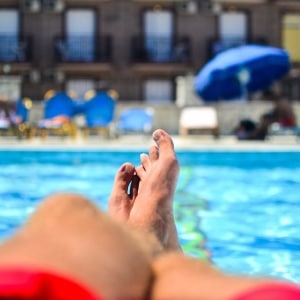
Data derived from a cohort of 1718 subjects in the Multi-Ethnic Study on Atherosclerosis Sleep Ancillary Study was evaluated for temporal substitutions of 30 minutes of sedentary time for MVPA, LPA, or sleep.
These data were based on having worn a research-grade accelerometer for 7 consecutive days which recorded sleep duration, sedentary behavior, and physical activity duration and intensity.
Surprisingly, substituting sitting with even 30 minutes of sleep led to higher cardiovascular health scores. We would have expected LPA and MVPA to yield cardiovascular benefits, but sleep?
It seems that ANY activity other than being sedentary improved body mass index (BMI); MVPA was associated with lower systolic and diastolic blood pressures. Also, interestingly, neither LPA nor MVPA improved total cholesterol or blood glucose numbers significantly. The authors suspect that “the high prevalence of other cardiometabolic risk factors” may have offset the benefits one might have expected from any physical activity substitutions.
MSSE Apr. 2021
How to Maintain Muscle Mass and Power on a Bike
We have two basic types of muscle fibers: slow- and fast-twitch or, like your Thanksgiving turkey, dark and white meat. The former is for endurance activities, from cardio to basic posture; the latter is for speedy and powerful movements, like a sprint or serving a tennis ball. As we age, we tend to lose the fast-twitch fibers, and the consequent power for simple activities of daily living. So the Human Performance Lab at UT-Austin trained 39 sedentary adults, ages 50-68, on an 8-wk program of maximal power cycling to perform 15 minutes of 4-second sprints with progressively lower amounts of recovery time between them as they got in better shape.
Needless to say, all the subjects improved muscle power (as much as 12%), which the research shows are critical to function and performance the more so as we age.
In fact, all improved on the two tests of power – how many repetitions they could sit-stand from a chair without assistance (no hands, Mom) and a timed walking test. Power cycling also increased thigh muscle volume (3.7%) and overall lean body mass (muscle mass; 1.5%), maximal oxygen uptake (9.8%), and significantly decreased an index of vascular function that estimates arterial stiffness from the aorta to the ankle (which is a positive health sign.)
Like other studies of high-intensity interval training (HIIT), the multilateral benefits the subjects accrued over just 8 weeks of 3 days of 15 minutes of hard work would be life-altering if not life-enhancing.
MSSE Dec. 29, 2020, published ahead of print; Reported in the UCLA Healthy Years newsletter, May 2021.
Tid Bits
Science is valid and reliable when done right. But a PLOS ONE (Dec. 2020) study found that 1/7 peer-reviewed nutrition studies in reputable journals had food industry ties. Of more than 14,000 studies, ~13% were “connected by food company funding or authors.” Comparing to some non-aligned studies, 55% reported favorable results; only 9% did not. Thus, it’s best to eat the least processed foods you prepare yourself. Environmental Nutrition Apr. 2021
A small study in the Annals of Internal Medicine (Jan. 12, 2021) assigned half of the 164 older subjects who had moderate to severe knee arthritis to either a thick-soled, sturdy shoe or a thin, more flexible shoe to be worn 6 hours/day. After 6 months, 58% of those wearing the supportive shoe reported a reduction in knee pain while walking compared to 40% of those who wore the flexible shoe. Also, the latter group reported more ankle or foot pain, making your choice even more clear. We avoid promoting brands but try Hoka or Altra shoes which come in sole thicknesses up to 28 mm. Harvard Health Letter May 2021
A study presented at the American Academy of Neurology’s annual meeting noted that 2/3 of migraine sufferers don’t get enough exercise. It found that people who achieve the ACSM’s guidelines for weekly exercise of 2.5 hrs/wk had a “reduced rate of common migraine triggers, such as depression, stress and sleep problems.” The study included 4600 people, 75% of whom had chronic migraines (~15/month.) Only 27% exercised 2.5 hrs/wk – does propensity to have migraines impact the will or capacity to exercise? Anxiety and poor sleep were significantly more common in non-exercisers – this is true of the non-migraine population, too – while depression was almost twice as common in non-exercisers. If only it took 30 mins/day to reduce the frequency of migraines? Mind, Mood & Memory May 2021

